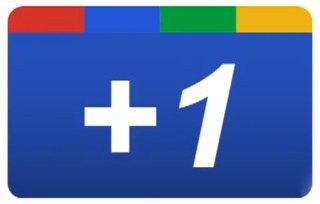Every Friday we round up media & tech industry news you may have missed while you were busy embarrassing Seattle’s finest.
Google is taking another stab at the social network biz, unleashing invite-only Google+ and sending tech reporters into a tizzy this week as they scrambled to secure a coveted invite.
Omg I went to the ladies room for like two minutes and have like 25 g+ requests in my inbox. What just happened?
Invites were at such a premium that a secondary market popped up on eBay, with some selling for as much as $75. So what’s the big deal? To wit:
It’s set up in a way that the average Internet user can immediately pick up on. It’s built on social circles, a familiar concept in real-life, so why not translate that to the Web?
A few minutes set aside to toy around with the service turned into hours, as I eagerly set up my circles and interests, and began interacting with the stream of content tailored to my interests.
One thing was clear early: It was clicky and addicting. I could +1 this, comment on that and share as I pleased. And it was no ghost town, even at this early stage. People were interacting back (among them Google employees; nice to see them so engaged). Not long after, “hangouts” began popping up, video chats that allowed me to meet new people with similar interests.
And in one key distinction from Facebook’s oft-criticized privacy practices, Google+ appears to have more respect for its users:
No one but me can see the names of the circles I’ve created, nor which circles I’ve designated for individual people. (I’m considering a circle called “insufferable” for people I find personally annoying but whose work I feel obliged to keep track of, in any case.) The G+ interface, the clean and easy-to-use design of which was led by Andy Hertzfeld of early Apple fame, allows me to drag and drop people into the appropriate circle or circles – a highly useful feature.
I also decide which of my posts are public or restricted to people in my circles, or even just one circle. So if I want to post something for my family, and only my family, a couple of simple mouse clicks ensure that they are the only ones who’ll see it. I can’t overstate the value of this.
Others were less impressed:
Just logged onto Google Plus, and it’s amazing. It’s like this online network of people. How has nobody thought of this before?
The Stranger‘s Anthony Hecht says that in order for it to succeed, Google+ will have to build a critical mass of users that will entice other users to join, the way Facebook did:
People who hate Facebook still sign up for it because they’re tired of being pestered about it or missing out on all the photos, etc. It’s where their friends and family are hanging out, so their refusal to join only pushes them out of those social circles. This is very powerful, and extremely hard to dislodge.
Power-inviter Jenny 8. Lee sees potential in using Google+ as a stream for news, concluding, “Facebook should be scared.”
And in case you’re having trouble sorting your acquaintances into the “Circles” feature of Google+, here’s a post with some suggestions, including: People You’ve Slept With, People You Want to Sleep With, Past Co-Workers, Past Co-Workers You Slept With, and Boyzzzzz.
One takeaway from this is that in the tech world, “only platforms create sustainable value”:
In this context, “platform” refers to technology upon which outside developers can and usually do improve, adding value both to other users and the underlying platform, while creating switching costs where none existed before.
Need an example? Think of Windows. As soon as developers began writing code that users found worthy enough to adopt, Windows became a platform, sending shares of Microsoft to the moon.
TechCrunch columnist Sarah Lacy advises LivingSocial to learn from Groupon’s mistakes:
How can LivingSocial beat a better-funded competitor with more name recognition who has a 22-country head start on them? Ironically by moving more slowly, throwing around less cash and being smarter with local hires, not pricey consultants and MBAs.
As we’ve reported for nearly a year, speed to market and “near endless” funds have only created bigger problems for Groupon that are sucking the company’s cash coffers dry, worrying potential investors and increasingly consuming the senior management’s time. While Groupon has done incredibly well in many markets, you could argue that “head start” has been as much of a curse for the company as a blessing.
And Noreen Malone writes about spending an entire week living off nothing but daily deal coupons.
Clicking around various Patches, I get the impression that the Patch concept isn’t to push hyperlocal news but to push (ultimately, at least) hyperlocal advertising. There’s nothing wrong with steering news audiences to advertisers. Great newspapers, magazines, and TV news programs do it. Slate does it. But Patch’s blandness and thinness convinces me that, to paraphrase Bruce Schneier,* Patch users aren’t the customers, they’re the product. The real customer is the advertiser, even though advertisers haven’t flocked to the sites yet. Of course, you’re the product on Facebook and Google, too, but they do a better job of masking it. The Patch presentation succeeds in being advertorialish and amateurish at the same time, which I find off-putting.
In the interests of your personal brand, John Scalzi says you should buy your own web domain, pointing out that Facebook (and Google+??) could go the way of Geocities, Friendster, Myspace, etc., and so maintaining your own domain provides a stable platform for your content.









